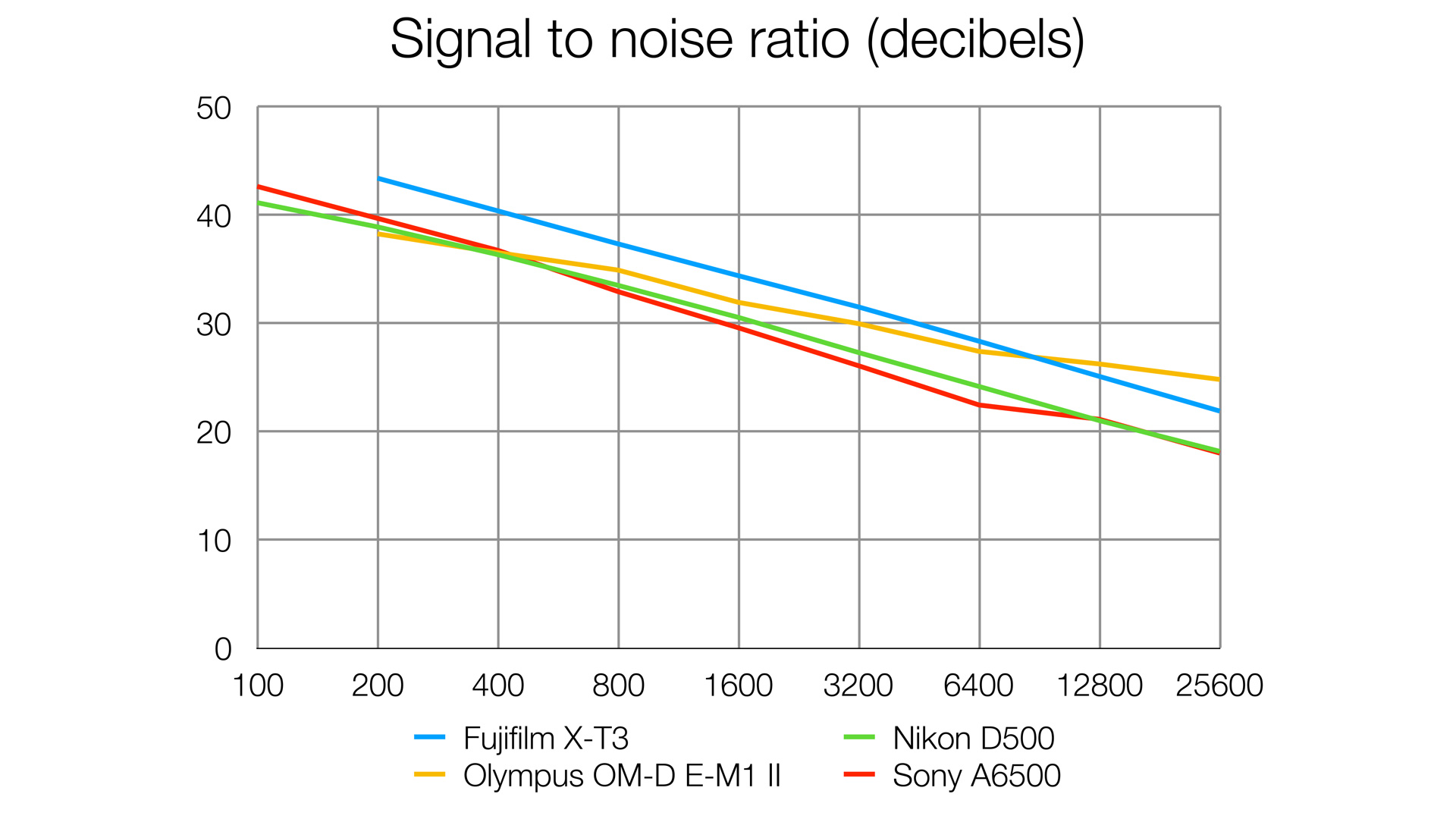Digital Camera World Verdict
The X-T3 is so good, in so many areas, that you really have to scrape the barrel to find anything negative to say about it at all. Yes, a bigger buffer depth would have been good in continuous shooting mode and it’s a shame there’s no in-body stabilisation, but if you look at the price and what this camera can do, it outweighs all these tiny niggles. The newer X-T4 has IBIS, a vari-angle screen and a bigger battery, but the X-T3's basic stills and video specs are the same, so it's a good deal.
Pros
- +
Excellent 26.1 megapixel sensor
- +
High-speed burst modes
- +
4K video at 60fps
- +
AF coverage over full image area
Cons
- -
Very sensitive to touch input
- -
No in-body stabilisation
- -
Tilting screen, not vari-angle
Why you can trust Digital Camera World
The Fujifilm X-T3 is no longer the flagship Fujifilm X-mount camera, as it's now been superseded by the Fujifilm X-T4, but the X-T3 represented such a major technological update that it's still at the cutting edge, even now.
The Fujifilm X-T3 and X-T4 are among the best Fujifilm cameras you can get, combining leading-edge 4K video capture with high-quality 26-megapixel stills. High-end stills shooters can step up to the far larger and more expensive medium format Fujifilm GFX 50R or mighty GFX 100, but even the GFX 100, with its latest firmware update and big-sensor cinematic look, doesn't shade the video credentials of the X-T3. X-T4 notwithstanding, the X-T3 remain one of the best mirrorless cameras of all when you factor in power, size and its new affordability as discounting starts to take hold.
What's more, a succession of firmware updates (currently up to v3.21 at the time of writing) have steady added improvements to the autofocus and video capabilities.

Specifications
- Sensor: 26.1MP APS-C X-Trans CMOS 4, 23.5 x 15.6mm
- Image processor: X-Processor 4
- AF points: 91-point phase AF across entire image area
- ISO range: 160 to 12,800 (exp. 80-51,200)
- Max image size: 6,240 x 4,160px
- Metering zones: 256
- Video: C4K or 4K UHD at 60p, 50p, 30p, 25p, 24p
- Viewfinder: EVF, 3,690k dots, 100% coverage
- Memory card: 2x SD/SDHC/SDXC
- LCD: 3.0-inch 2-axis tilting touchscreen, 1,040K dots
- Max burst: 11fps (mechanical shutter), 20fps (electronic shutter), 30fps (electronic shutter, 1.25x crop mode)
- Connectivity: Wi-Fi, Bluetooth
- Size: 132.5 x 92.8 x 58.8mm (body only)
- Weight: 539g (body only, with battery and memory card)
Key features
The X-T3 is the first model to use Fujifilm's latest generation 26.1 megapixel sensor. This is barely two megapixels more than the previous X-T2, but the extra resolution isn’t the point. For a start, this is Fujifilm’s first back-illuminated X-Trans sensor, which means the electronic wiring is at the back of the sensor and not obscuring the photodiodes at the front. This means better light gathering power and better overall image quality.
Canon may have stolen the megapixel crown with the 32.5MP EOS M6 Mark II, but the extra megapixels don't necessarily make that much difference given that the Canon's sensor has a low pass filter and the Canon EF-M lens range (sorry, Canon) isn't really of the same caliber as Fujifilm's.
More important, the X-T3 sensor has 2.16 million phase detection sensors spread across the full image area. That’s a big step up from the previous X-T2, and the autofocus performance is boosted still further by the inclusion of a new X-Processor 4 image processor that’s three times faster than the one before.
This means faster focusing, improved subject tracking and increased autofocus sensitivity, down to -3EV.
The best camera deals, reviews, product advice, and unmissable photography news, direct to your inbox!
The enhanced autofocus performance goes together with upgraded continuous shooting speeds. The X-T3 can now shoot at 11fps with its mechanical shutter (the old X-T2 needed an external booster grip to achieve this speed) and an excellent 30fps in electronic shutter mode with the camera’s new 1.25x cropped ’Sports Finder’ mode.
Even more impressive than all of this – for videographers at least – is the X-T3’s ability to capture 10-bit 4K video at up to 60p with 4:2:0 colour sampling (if you use an external recorder, that goes up to 4:2:2).
This is a pretty exceptional video specification for a stills/video crossover camera and marks a big step forward for Fujifilm’s video ambitions. From being a relative newcomer a short time ago, it now offers the most advanced video specifications of any APS-C format camera.
Read more:
The best Fujifilm lenses in 2020
The best Fujifilm cameras in 2020
Build and handling
The X-T3 is a mid-sized mirrorless camera that’s a good deal smaller than an enthusiast DSLR but still big enough for a good range of external controls.
These have become a Fujifilm speciality, as it recreates the controls of pre-digital analog film cameras. There’s no mode dial on the X-T3 as it uses an external shutter speed dial and lens aperture ring instead. Even the ISO is set on an external dial.
The advantage of this setup is that you can see the camera settings without even switching it on, and it’s much easier to make manual adjustments with dedicated physical dials than it is to press buttons, turn dials and peer and screens.
We tested the X-T3 with Fujifilm’s 18-55mm f/2.8-4 kit lens most likely to be bought with the X-T3 and the 16-55mm f/2.8 standard zoom, but we also tried out the company’s ‘red badge’ XF50-140mmF2.8 R LM OIS WR lenses.
Annoyingly, not all Fujifilm lenses have an aperture ring. Fujfilm’s premium lenses do, but the 18-55mm f/2.8-4 has an auto-manual switch instead. Here, you adjust the aperture by turning a ring on the lens, and the value is shown on the camera display, not on the ring itself.
The XF18-55mmF2.8-4 R LM OIS feels a perfect fit as a kit lens, and the 16-55mm f/2.8 and 50-140mm zoom doesn’t make it feel quite as front-heavy as you might expect. You will be able to get a VPB-XH1 battery grip which will both extend the battery life and improve the handling with long lenses.
The X-T3 is bigger than the Fujifilm X-T30 and other X-mount cameras, but can still feel a little small in the hands. The newer X-T4 is just a few millimetres larger, but that does make a significant difference to the handling.
The electronic viewfinder is excellent. It has a resolution of 3.69 millions dots and Fujifilm claims its 100fps refresh rate gives it a lag time of just 0.005 seconds. That means smoother movement when panning with fast-moving subjects like sports cars, for example, which makes it a lot easier to keep them centred in the frame.
There’s a lot of debate about whether mirrorless AF systems can match the best DSLR phase detection autofocus for sports photography, but it’s actually more of a viewfinder issue. EVFs are only now reaching the relatively lag-free performance needed to follow fast-moving subjects.
The rear screen is sharp and clear too, and we’d expect nothing less from a modern digital display. It’s not fully articulating, but it does have a sideways hinge which allows it to flip both up and down and to the right. It’s a smaller range of movements than a fully articulating screen, but it doesn’t fold out to the side and does stay more or less on the camera’s optical axis, which does feel like a more natural way of shooting. The full vari-angle display on the X-T4 is much better suited to gimbal use, however, where the ability to tilt the screen in all directions becomes important.
There is a drive mode dial stacked under the ISO dial on the far left of the top plate and a metering mode dial under the shutter speed dial on the right. There are two inset control dials, one on the front and one on the back, and these have a ‘click’ action. In playback mode, for example, you can click on the rear dial to zoom in to a magnified image to inspect it for sharpness.
The back of the camera also has a small ‘thumbstick’ (focus lever) for moving the focus point around the frame.
Alternatively, you can move the focus point using the touchscreen display, which can also be used in touch-shutter mode and for changing camera settings. It’s pretty sensitive, though, and it’s very easy to end up in the 1.25x Sports Finder mode through accidentally swiping the display as you handle the camera.
The X-T3 does have extensive customization options, so customizing its touch-screen responses (or even disabling touch-sensitivity altogether) is probably one of the first things new users should look at.
Performance
The new autofocus feels fast and responsive with all of the lenses we tried, though there is a point worth making here: AF performance is as much depending on the speed and efficiency of each lens’s AF actuators as it is the camera’s autofocus system. Some older lenses, like the 27mm f/2.8 ‘pancake’ prime and 56mm f/1.2 APD have slower, noisier actuators than can make the X-T3’s autofocus seem less efficient than it actually is.
In fact, with Fujifilm’s latest lenses the X-T3 handles fast-moving subjects very well, even when they’re moving towards the camera. The trick is to select the correct focus mode – using focus ‘zone’ with a cluster of AF points is easier than trying to keep a single AF point over a moving subject.
Usually with mirrorless cameras, the EVF is the weak point for capturing fast action, not the autofocus system. It’s hard to follow fast-moving subjects with a jerky screen refresh. The X-T3 looked pretty good here, too, as subject movement in panning shots was a lot smoother than we’re used to seeing with EVFs.
The image quality is especially impressive. In our lab tests the X-T3 26.1-megapixel sensor delivers just about the highest resolution we would expect to see from an APS-C sensor, and with very good noise and dynamic range performance too.
In fact, the level of detail captured in some of these shots is very impressive indeed. The X-T3 uses an APS-C sensor rather than full frame, but the combination of its low-pass filter-free sensor design and Fujifilm’s top-quality X-mount lenses can produces outstanding results.
Its JPEGs are especially good, with great edge definition, textural detail and noise control. We examined the raw files using Capture One Express Fujifilm, now offered free by Phase One as a far superior alternative to the bundled Silkypix-based Fujifilm software, and found that even with Phase One’s excellent processing engine, it was hard to improve on the rendition of the camera’s JPEGs.
Editing raw files in Capture One also revealed the extended highlight and shadow detail that can be recovered from the X-T3’s raw files.
The X-T3’s Film Simulation modes offer rich, dense, natural-looking colours for JPEG shooters, and the expanded dynamic range option really does help prevent bright highlights burning out. The X-T3 adds a new Colour Chrome effect to improve the appearance of highly saturated colours, and a Warm Black/Cool Black adjustment to add depth to monochrome images.
Unlike the new X-T4, the X-T3 does not have in-body image stabilisation, but many Fujifilm lenses have have optical image stabilisation built in, so this may not prove to be an issue for many photographers, and if you shoot video with a gimbal, in-body stabilisation may not be high on your list of priorities.
The level of detail captured in the X-T3's shots is very impressive indeed. It uses an APS-C sensor rather than full frame, but the combination of its low-pass filter-free sensor design and Fujifilm’s top-quality X-mount lenses can produce outstanding results.
Lab tests
It’s pretty difficult to find any other camera that matches the Fujifilm X-T3’s video and stills specifications, performance and price, but we’ve found three other high-speed APS-C cameras that come close: The Nikon D500, Olympus OM-D E-M1 II and Sony A6500. The Olympus and the Sony have been superseded by newer models, but we have kept them in this comparison as previous models (like the X-T3) which are still on sale at discounted prices.
Resolution
The X-T3 is a clear winner in the resolution test. It’s matched by the formidable Nikon D500 up to ISO 400, but while the Nikon and the rest fall away at higher ISOs, the X-T3 maintains its resolution at the same high level right up to ISO 6400. There’s a quiet revolution going on the field of sensor design and image processing, and the X-T3 shows just how far the technology has come.
Signal to noise ratio
Again, the Fujifilm X-T3 is a clear winner here, despite having a higher pixel count than the rest. Surprisingly, the Olympus OM-D E-M1 II runs it a close second, even catching up at very high ISO settings. We’ve grown used to seeing very good results from these Micro Four Thirds sensors, despite their smaller size.
Dynamic range
Again, the X-T3 and the Olympus are very close, with the OM-D E-M1 II even sneaking slightly ahead at very high ISO settings. The Nikon D500 pretty much matches the pair of them up to ISO 800 but then falls away, while the two-year old Sony A6500 is starting to show its age in fourth place.
Verdict
The X-T3 handles just like the X-T2 and X-T1 before it, and feels much more like an old-school film SLR than a modern digital SLR does, which is ironic. It’s well balanced, with firm, positive controls and a real premium-quality feel.
A few people might complain that there’s not much of an increase in resolution, but the real point of this upgrade is the X-T3’s massive boost in processing power, autofocus and 4K video capability. The newer X-T4 has many improvements, but not to the core image quality and video capabilities, where the X-T3 is as fresh now as when it was launched.

Canon, Nikon, Panasonic and Sigma have all joined Sony in the full frame mirrorless camera market, but full frame camera systems remain big and expensive compared to APS-C systems like this one, and don't necessarily offer clear advantages for video. The X-T3 brings a balance of features, size and affordability that full frame cameras, for all their strengths, are unlikely to match any time soon. The real question is how much you want the in-body-stabilisation, bigger battery and vari-angle screen of the X-T4, and how much you want to pay to get them!
Read more:
• The best Fujifilm lenses right now
• The best Fujifilm cameras today
• DSLR vs mirrorless cameras: how they compare
• The Best mirrorless cameras
• Capture One Express Fujifilm review

Rod is an independent photography journalist and editor, and a long-standing Digital Camera World contributor, having previously worked as DCW's Group Reviews editor. Before that he has been technique editor on N-Photo, Head of Testing for the photography division and Camera Channel editor on TechRadar, as well as contributing to many other publications. He has been writing about photography technique, photo editing and digital cameras since they first appeared, and before that began his career writing about film photography. He has used and reviewed practically every interchangeable lens camera launched in the past 20 years, from entry-level DSLRs to medium format cameras, together with lenses, tripods, gimbals, light meters, camera bags and more. Rod has his own camera gear blog at fotovolo.com but also writes about photo-editing applications and techniques at lifeafterphotoshop.com















